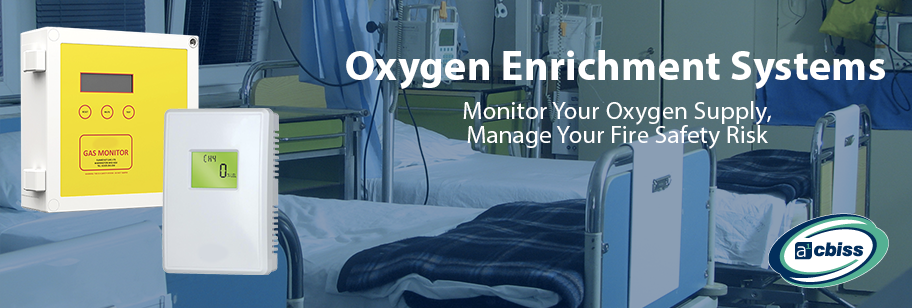NHS England have issued an imminent alert for hospital estates and facilities teams to evaluate risks caused by oxygen enrichment. By 18th December 2020, hospitals need to have their action plan in place.
It is therefore particularly important that trusts continue to follow previously issued guidance in relation to oxygen supplies.
Oxygen Leakage
This winter, demand for oxygen is likely to be higher than in spring because there are more general and acute patients in hospital than in the spring. Many of whom require some oxygen and there is proportionately greater use of HFNO2 and CPAP in patients with COVID19 and in general, these devices use more oxygen than critical care ventilators.
CPAP and critical care ventilators don’t need to be defective to leak oxygen, oxygen can find its way out of a system at various points when in use. Even mask ventilators have a degree of permissible leakage to enable patient exhalation.
Fire Risk
In relation to oxygen supplies within NHS acute and specialist hospital trusts and independent hospitals, trusts are reminded to be aware of:
• High ambient oxygen levels and fire risk: Use of high flow open circuit oxygen devices carries a risk of increasing ambient oxygen concentration. If this exceeds 23% this poses a potential fire risk.
Oxygen Enrichment Alarms
The only certain way to establish if oxygen levels are meeting safety limits is the installation of reliable and accurate oxygen enrichment detectors.
Our Solution
Fixed Sequential Oxygen Enrichment Monitoring System
The beauty of a sequential monitoring system means that it can monitor oxygen levels at multiple points around a hospital ward, cylinder storage areas and oxygen tanks at the fraction of the cost compared to gas detection systems.
a1-cbiss would recommend the installation of a sequential system where over 8 points of gas detection are required to save the costs of placing individual gas transmitters/gas sensors. This is made possible because the gas sensing element takes place within the system rather than installing a gas sensor at each fixed point of detection
If an area is enriched with Oxygen, the system can be configured to sound a local alarm or a remote alarm within the facilities dept.
The sequential sampler also offers continuous datalogging for reporting and trending.
Personal Oxygen Enrichment Monitors
a1-cbiss recommend that an Oxygen monitor is attached to each hospital bed to alarm in the event of a leak. This provides protection for Care Givers and Patients. The Protégé ZM displays live readings of O2 from 5% to 30%.
Once activated, the Protégé ZM monitor will operate for 2 years so you don’t have to worry about charging so these monitors can be deployed in the field 24 hours a day, hassle free.
Alarm levels can be configured to meet your needs on site.
Oxygen Enrichment Sensors
If you wish to have an oxygen sensor in every monitoring location, a1-cbiss provide a low-cost solution that shows a colour coded live display…perfect for a hospital ward where there are lots of people and other alarms sounding.
The sensors are networked to a control panel which enables central control of the alarms and the data logs from that area. Multiple devices can be interconnected on a single cable, therefore ensuring the system could be rapidly implemented at a low cost and often by the onsite maintenance team.
For more information, contact a1-cbiss







